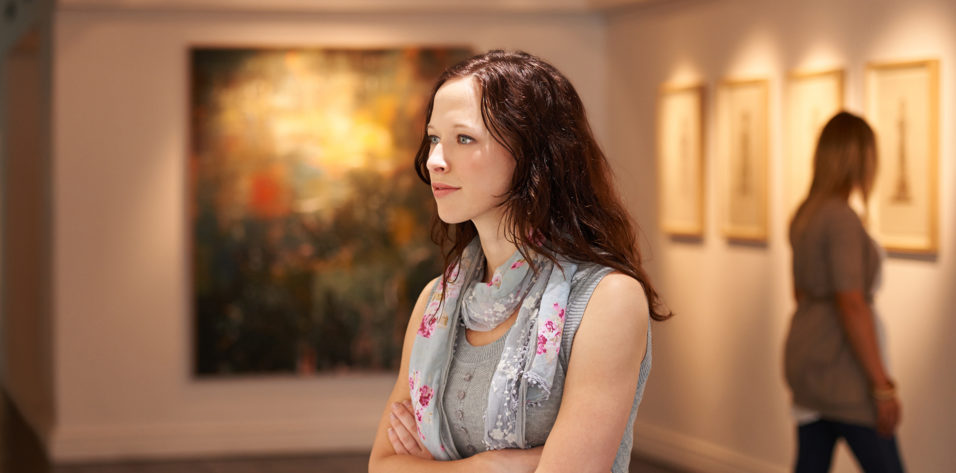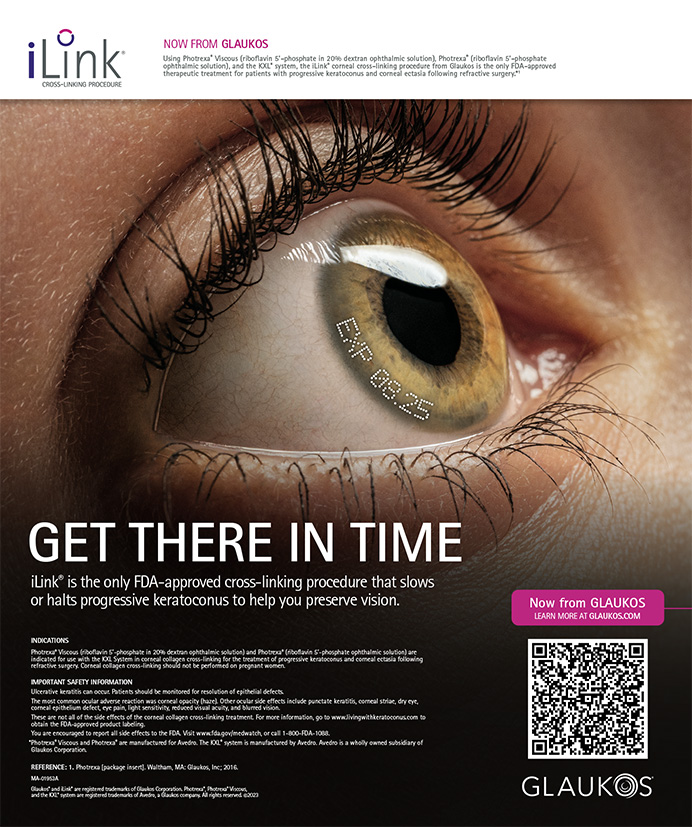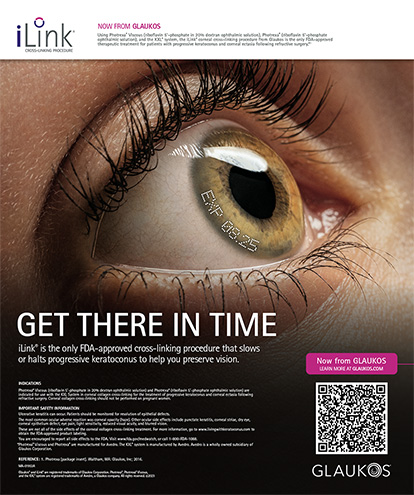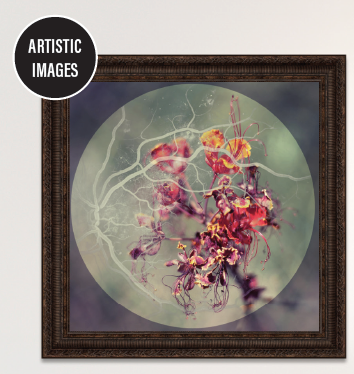
Dayna Bartoli
ophthalmic photographer, Phoenix
This image is part of a series titled “Florafaunal Angiography,” in which the artist combines the anatomical process of vision with the aesthetic experience of sight. Working as an ophthalmic photographer, Bartoli performs diagnostic tests for retina surgeons that document blood flow through the vessels in the retina. In this series, these medical images are given a meaning outside of diagnosing disease. Through compositing the vessels into photographs of flora and fauna, a new spatial relationship is created between the internal sensory anatomy of the eye and what is actually seen in the external experience of the world. The two interweave, unifying the different photographic and visual processes.
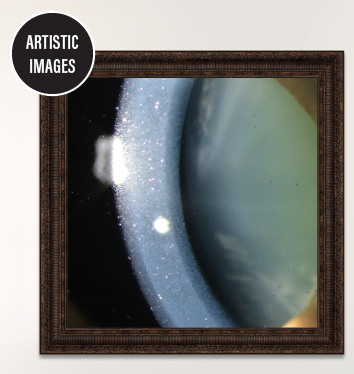
An-Katrien De Brauwer, MD
resident, Namens Maastricht UMC, Maastricht, The Netherlands
A tear film catches the light in a beautiful way. Seeing things like this is one of the reasons why we are lucky to be ophthalmologists.
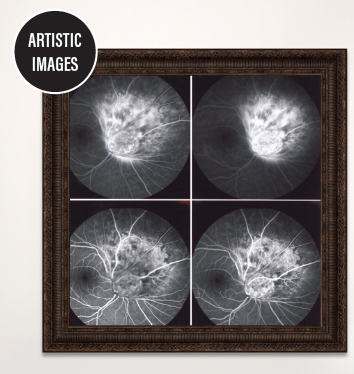
Kathleen Warren
ophthalmic photographer, New England Eye Care Center, Boston
A 35-year-old woman with choroidal malignant melanoma.

Ayan Mohanta, MBBS, MS
senior consultant, Disha Eye Hospitals and Research Center, Kolkata, India
This is a slit-lamp photograph of a postoperative LASIK patient (day 2). The patient came to us with irritation, photophobia, and mild dimness of vision. Fine granular inflammatory reaction is seen in the lamellar interface, confined within the flap margin. The method employed to photograph the image was sclerotic scatter.
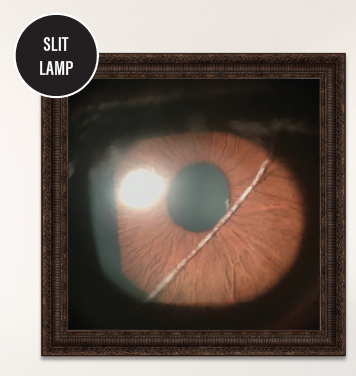
Eric Rosenberg, DO
resident, New York Medical College, New York
Pronounced posterior embryotoxon with iris standing as seen in Axenfeld-Rieger syndrome.
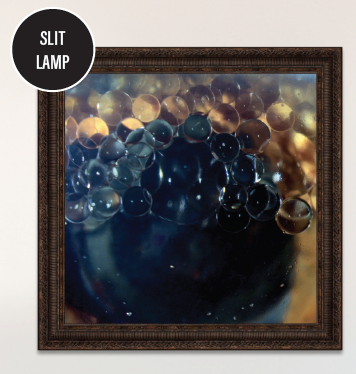
Lisa Dennehy
ophthalmic photographer, Massachusetts Eye and Ear, Boston
Silicone oil droplets in the anterior chamber.
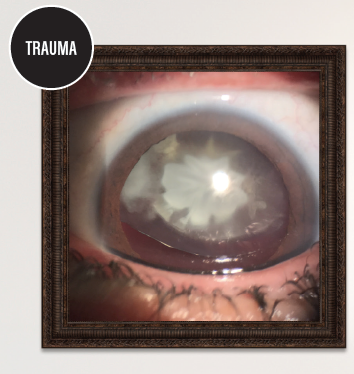
Danielle Kamiji, MD
resident, University of Campinas, São Paulo, Brazil
Traumatic cataract may occur after blunt trauma. The morphology of a classic traumatic cataract is referred to as a rosette or stellate type that may be stable or progressive. Lens dislocation and subluxation are commonly found in conjunction with traumatic cataract.
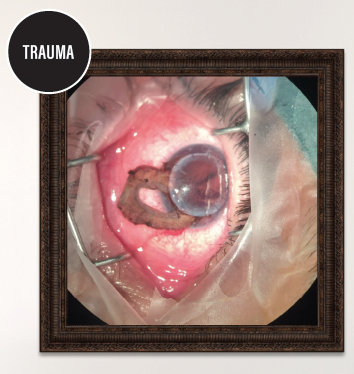
Mostafa Aggour, MD
consultant ophthalmologist, Al Bahar Eye Hospital, Kuwait City, Kuwait
Postcorneal graft blunt trauma, inferior wound rupture, lens extrusion, more than 270° iris root avulsion.
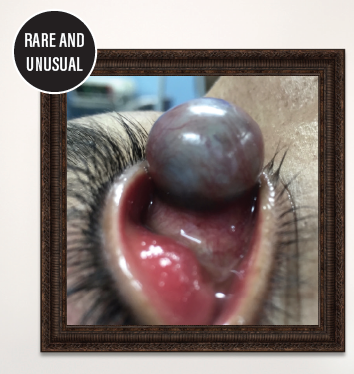
Patrick F. Tzelikis, MD
head of Cornea Department, Brasilia Ophthalmologic Hospital, Brasilia, Brazil
At the start of his crack cocaine use, the patient noticed redness and irritation of his eyes. Over the next 4 months, he also noticed the onset of decreasing visual acuity in his right eye. Initially, his visual acuity was light perception in the right eye, and slit-lamp examination showed a corneal infiltrate with a peripheral perforation and an iris prolapse. The patient was hospitalized, but he against medical advice and was lost to follow-up for the next 6 months. He returned complaining of photophobia and the inability to close his right eyelid. At that time, his cornea had developed an anterior staphyloma and required a sclerokeratoplasty. After surgery, the patient was again lost to follow-up.

An-Katrien De Brauwer, MD
resident, Namens Maastricht UMC, Maastricht, The Netherlands
This patient consulted us because of a bump on her left eye. On slit-lamp examination, a corneal lesion with a vascularised cystic appearance was seen. The lesion was surgically removed and histopathologic examination revealed a corneal malignant melanoma. The patient received adjuvant radiotherapy with ongoing follow-up visits until the present.
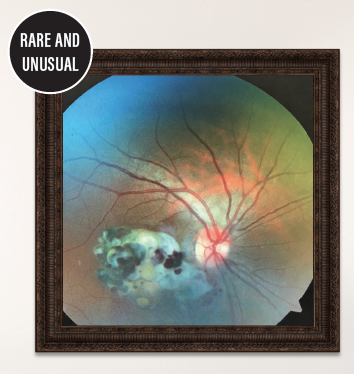
Danielle Kamiji, MD
resident, University of Campinas, São Paulo, Brazil
Rare unilateral congenital hamartoma.

Jared Younger, MD, MPH
eye surgeon, Orange Coast Eye Center
A patient with a history of cataract surgery fell and was referred for evaluation of double vision. Examination showed a subluxated capsular bag IOL complex.

